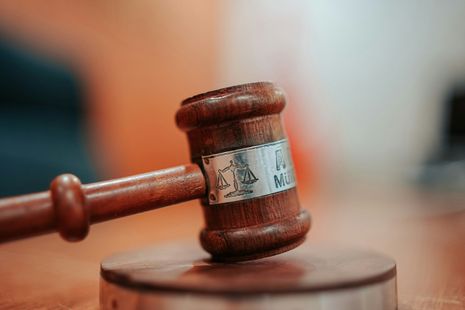Injured in a car accident?
We're here to fight for you.
Call now for a free consultation.
(615) 848-1818
Car, truck, motorcycle, or slip-and-fall—we handle it all.
Serving Murfreesboro and Middle Tennessee with clear answers, personal attention, and the legal support you need—when you need it most.
Why Work With The Thomas Law Firm?
When you’re hurt, you need more than a lawyer—you need someone who listens, acts fast, and knows how to win. Led by attorney D. Russell Thomas, our firm is known throughout Murfreesboro and Middle Tennessee for being:
-
COMPASSIONATE WITH CLIENTS
-
AGGRESSIVE WITH INSURANCE COMPANIES
-
CLEAR, RESPONSIVE, AND HONEST EVERY STEP OF THE WAY
Whether you’re recovering from a car wreck, a motorcycle crash, or a serious slip-and-fall, you deserve a legal team that makes you feel seen—and gets real results.
Strategic Solutions for Your Business, Finances, and Family
When it comes to your business, investments, or loved ones, you need a legal partner who understands the stakes. If you’ve been wronged by someone you thought was a trusted advisor, we’re here to fight for your rights. With decades of experience in litigation, including class actions and arbitration, Leslie Schwaebe Akins, ALC is committed to helping you recover losses and hold those responsible for misconduct accountable.

Attorney D. Russel Thomas
With more than four decades of personal injury litigation experience, D. Russell Thomas has earned a reputation as one of Middle Tennessee’s most respected and results-driven trial attorneys. A lifelong Tennessean raised in Cannon County, Mr. Thomas brings a deep understanding of the local community and legal landscape to every case—whether it involves car accidents, trucking collisions, slip-and-fall injuries, or complex liability claims.
Mr. Thomas is known for his strong courtroom presence, deep legal knowledge, and unwavering commitment to ethical practice. Clients value his approachable demeanor, meticulous preparation, and ability to navigate even the most complex injury cases with clarity and confidence.
What We Handle
We focus on personal injury law—and we do it well.
Auto Accidents
The Thomas Law Firm is your Murfreesboro car accident lawyer for drivers, passengers, and pedestrians.
Truck Accidents
The Thomas Law Firm is your Nashville and Murfreesboro truck accident lawyer for serious injuries and commercial claims.
Motorcycle Accidents
The Thomas Law Firm is the best motorcycle accident attorney in Murfreesboro for riders who need justice.
Slip, Trip and Fall Cases
From grocery stores to all types of commercial and residential properties, we handle premises liability cases.
Financial Fraud & Investment Recovery
We help clients recover losses from financial fraud, Ponzi schemes, broker misconduct, and deceptive investment practices.
Business & Corporate Disputes
We resolve business conflicts, including contract breaches, franchise disputes, and partnership disagreements, through strategic legal solutions.
Insurance, Bankruptcy & Elder Protection
We protect clients facing denied insurance claims, creditor bankruptcy disputes, and elder financial abuse, ensuring their financial rights are upheld.
Looking for the best car accident attorney in Murfreesboro?
Start here.
Call (615) 848-1818 for your free consultation today. Let’s talk about your options and your future.
We help clients in:
Car and truck accident cases
Motorcycle and 18-wheeler collisions
Passenger injuries and multi-vehicle crashes
Unraveling Fraud, Restoring Trust.
Working with Leslie Schwaebe Akins, ALC means receiving personalized, strategic legal guidance tailored to your unique needs. From the moment you reach out, Attorney Akins takes the time to listen, answer your questions, and explain your options clearly. We offer expert representation with a compassionate, hands-on approach. You can trust us to handle the legal complexities while you focus on moving forward with confidence and peace of mind.



